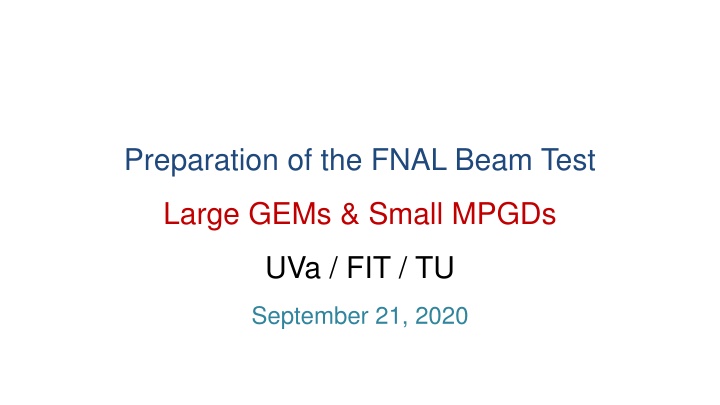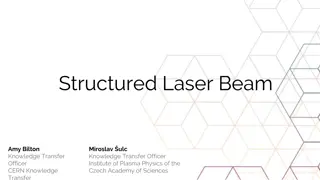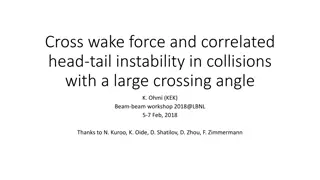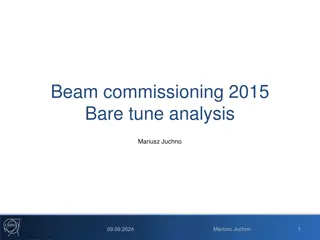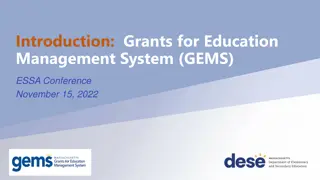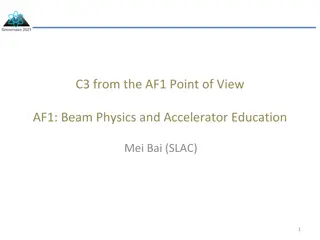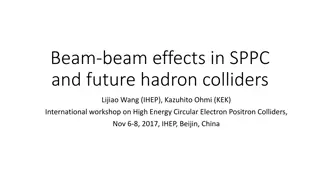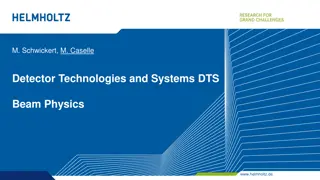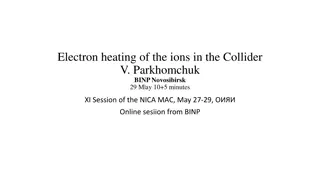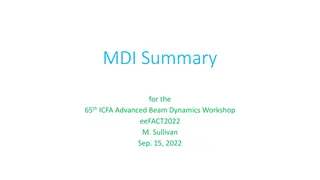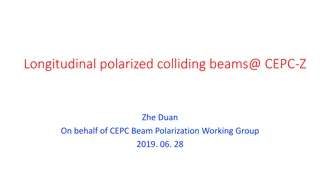Preparation of FNAL Beam Test with Large GEMs & Small MPGDs
Set goals, setup requirements, and FE readout/DAQ details for testing large GEMs and small MPGDs for spatial resolution studies. Discuss equipment needed, team members involved, and the possibility of running in parallel with other setups.
Download Presentation

Please find below an Image/Link to download the presentation.
The content on the website is provided AS IS for your information and personal use only. It may not be sold, licensed, or shared on other websites without obtaining consent from the author.If you encounter any issues during the download, it is possible that the publisher has removed the file from their server.
You are allowed to download the files provided on this website for personal or commercial use, subject to the condition that they are used lawfully. All files are the property of their respective owners.
The content on the website is provided AS IS for your information and personal use only. It may not be sold, licensed, or shared on other websites without obtaining consent from the author.
E N D
Presentation Transcript
Preparation of the FNAL Beam Test Large GEMs & Small MPGDs UVa / FIT / TU September 21, 2020
Goals: Set of large GEM and small MPGDs to test for spatial resolution studies UVa: SRS-VMM3 (UVa) Large GEM with U-V strips: Spatial resolution & efficiency studies. Set of 10 cm 10 cm GEM and uRWELL prototypes with capacitive sharing readout (pads & strips): response linearity & spatial resolution VMM3 based SRS readout: Test this new readout system in test beam FIT: Large GEM with zigzag strips: Overall detector performance, spatial resolution & efficiency studies RWELLs (UVa, TU) Capacitive sharing R/O (UVa) TU: TPC- RWELL prototype: Overall detector performance, spatial resolution & efficiency studies in micro-TPC mode Large GEM (FIT) Large GEM (UVa)
Setup and Beam Requirements Requirements for the large GEMs & Small MPGDs MT6.2b as the X-Y moving table Large GEMs and small MPGDs on X-Y moving table in two configurations 2 stands with 2 (or 3) small GEMs each upstream and downstream of the x-y stand 120 GeV proton beam as primary users 2 full weeks data taking (one week for each configuration) Would consider runs with lower energy from secondary hadron beam Gas need: Argon CO2 (70/30) HV power supply: Wiener Crate + MPOD modules, enough channels for all detectors Team at Test beam: UVa: Kondo Gnanvo One UVa student FIT: Marcus Hohlmann? FIT students? TU: Matt Posik? TU students?
FE Readout & DAQ: APV25 & VMM3 based SRS Large GEM Setup: Needs UVa FIT 1 euro crate & SRU & 2 FECs V3 / ADC cards 40 APV25-SRS FE cards OK (~ 90 cards in hand) 29 APV25 cards UVa & FIT large GEMs: 2 FEC / ADC combo Small MPGD Setup: Min 3 FECs, ideally 4 (must be FEC v.3) 1 FEC for sure (maybe 2) Need 2 or 3 more Need to 2 or 3 more 1 euro crate & SRU & 2 FECs V3 / ADC cards 4 VMM3-SRS + 1 FEC v.6 + 1 DVM card OK (conditionally approved) Max 16 UVa & TU small MPGDs: 29 APV25 cards 1 FEC / ADC combo 4 GEM trackers setup: Min 3 ADC cards, ideally 4 More than 4 in hand 4 2 APV25 cards / GEM 1 FEC / ADC combo VMM3-SRS Setup: standalone DAQ PC and software 1 SRU OK 1 mini crate & 1 FECs V6 / DVM combo Long HDMI cables OK 4 VMM3-SRS cards on standard GEM 2 DAQ PC for APV25- SRS (1 DATE + 1 AMORE) OK Ideally one back up DAQ: Trigger rate < 1kHz 1 DAQ PC for VMM3 (Standalone electronics) Need to be set up before hand DATE & AmoreSRS Our default option 1 10Gb NIC OK Ideally a spare backup RCDAQ (option for TU or FIT) 1 long optical fiber OK Ideally a spare backup Matt will set this up RCDAQ also plan B option 2 TB eternal disk I will get one for UVa Ideally FIT to have one copy of the data
Possibility to run in parallel with the others Yes: We will run with all the other setups not using MT6.2b area But ideally, we would like to occupy this space as primary users for 2 full weeks and with 120 GeV proton beam Keep the setup in place and continue data taking as secondary users for the remaining weeks if the space is not used for another setup GEM-TRD setup can run upstream or downstream our setup Upstream and Downstream Trackers: Could remain in place and be used for other detector setup if deemed necessary We could even also leave the APV25-SRS readout if needed Anything else you consider important to mention: Would like to keep our Ar-CO2 gas bottles (2 bottles) inside the beam area close to detector setups
